A small country with the Andes mountains, Amazon jungle and ocean coastline packed into one, Ecuador fruits are a wild adventure on their own.
Without a doubt Ecuador is one of my favourite countries. Each time I go there I plan to spend a few weeks then max out my 3 month visa.
Ecuador is a small country that offers so much. There are species of animals in this tiny country that you cannot find anywhere else.
And the food is so underrated! Especially Ecuadorian fruit.
‘23 of My Favourite Ecuador Fruits
I spent A LOT of time in markets in Ecuador. I loved the Otavalo market so much I’ve been there three times.
Markets are such an easy way to strike up a conversation with locals. Some Ecuadorian fruits are supposed to be cooked, or used in traditional dishes.
And when I stayed in Cuenca Ecuador I was at the local market daily at the juice stand. It was part of my morning routine.
I liked how they recognized me every day and asked which drink I’d like to try that day. It’s the small things when you travel solo.
These are some of the more interesting Ecuador fruits, although there are lots. For example, Ecuador is a great places to grow berries like in Canada!
And there I learned that while much of Latin America called strawberry fraisa, in Ecuador it is frutilla.
Although they are so nice if you saw fraisa they know what you mean and won’t correct you.
Anyway let’s get to some of the delicious and unusual Ecuadorian fruits!
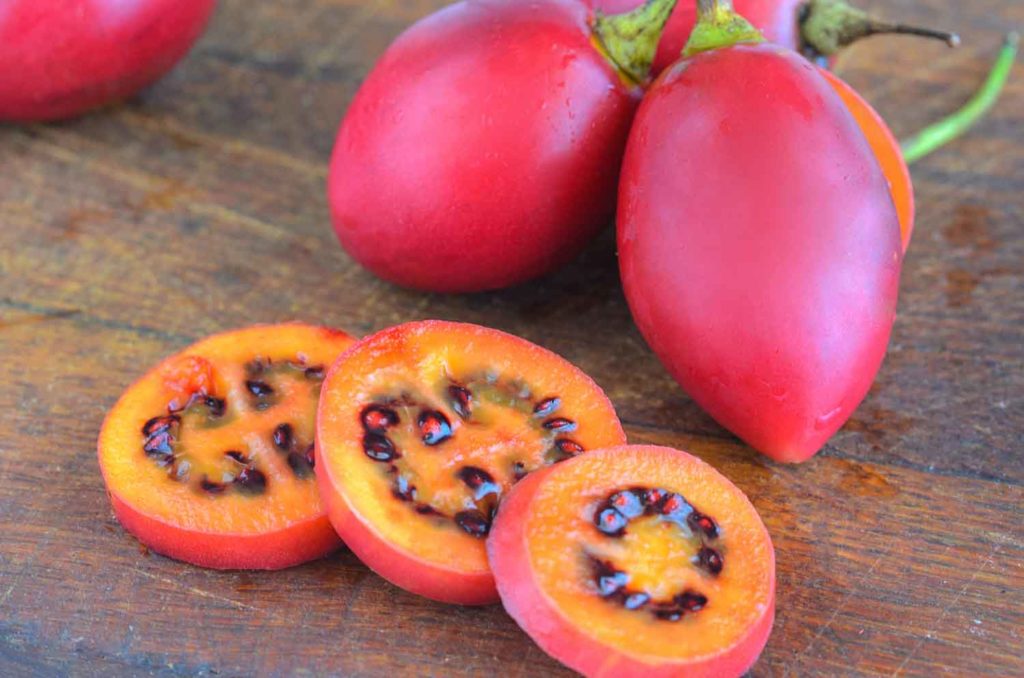
Tomate de Arbol
My absolute favourite fruit in Ecuador is actually called tree tomato. And it’s not sweet but savoury.
Tomate de arbol is an egg-shaped edible fruit that looks strikingly similar to tomatoes, thus its name.
Also called tamarillo, tamamoro and tree tomato, this fruit native to the Andes in Peru, Ecuador, Chile and Colombia.
But it’s also now widely propagated in countries like New Zealand, Australia and the United States.
It is THAT tasty.
Tomate de arbol season runs from July until November where you can easily buy this fruit in most local markets in Ecuador.
Ecuadorians blend fresh tomate de arbol with chili peppers to create a hot sauce called “aji,” which is very popular in Andean cuisine.
Ecuadorian food itself isn’t very spicy, but there is always a bowl of aji on the table made from tomate de arbol.
Once you try it you’ll want it at every meal.
‘Babaco
Native to Ecuador, babaco belongs to the papaya family, which explains why it looks exactly like one.
The babaco tree can tolerate cold weather and it can grow at high altitudes in Ecuador.
It starts bearing fruit 10 months after planting and it continues to produce about 40 fruits for the next 6 months.
While babaco looks similarly to papaya, it has the flavor profile of pineapple, citrus and papaya, which is sweet and sometimes sour.
This is great because I cannot stand papaya – which is why I left it off this list. That said papaya is everywhere if you like it for some strange reason.
Aside from being eaten raw, babaco is a popular ingredient for smoothies and shakes.
It’s very cheap to buy and available almost all-year round. Some Ecuadorians also turn babaco into a jam or add it to stews and cakes.
‘Tuna Fruit
You may find it odd to see tuna in this list of Ecuadorian fruits, but tuna is actually called prickly pear in other countries.
It’s the fruit of the opuntia littoralis cactus variety that’s widely grown in some parts of Ecuador.
It’s not always easy to find. I first had tuna in Colca Canyon in Peru and then had to search for it in Ecuador.
But if it’s in season it is absolutely worth trying.
Tuna is a small, pink fruit with some tiny thorns on its skin.
Before you can enjoy the sweet flesh inside, you need to remove the spiny skin first by peeling it off carefully to avoid being pierced by the thorns.
Which is why it’s best to find in the market, they remove it for you!
Tuna also has some very hard seeds that you need to deal with. Just split themm out.
Locals eat the tuna fruit raw and it’s also made into prickly pear syrup and as part of a cocktail called “agua de tuna.”
‘Jocote
Also called hog plum or ciriguela, jocote comes from the Spondias purpurea tree that belongs to the cashew family that’s native to the tropical regions of the Americas such as Brazil.
The jocote fruit look like small plums that range from green to red in color.
The inside of the fruit actually contains only a small amount of flesh as the huge seed in the middle occupies most of it. It’s similar to a lychee that way.
In Ecuador, jocote is eaten raw because of its sweet and citrusy flavor, which is refreshing, especially during the summer.
It is rarely used for other dishes because you can only harvest a small amount of flesh from every fruit and the seed inside is also not edible.
Ciruela
Similar to jocote it is a type of plum. It’s known as obos in Quito and neighbouring Imbabura it is called chota.
‘Pitahaya
You will find pitahaya or dragon fruit in most markets around the world today. It’s the national fruit of Vietnam.
It’s also widely cultivated in tropical regions and it’s famous for its bright pink color and leaf sprouts around its body.
But Ecuador is most known for its yellow pitahaya, which is grown mainly in the country.
Aside from its unique color, this rare dragon fruit variety is also a lot sweeter than its pink counterpart.
I am always disappointed by dragon fruit because it looks beautiful but the flavour is mild. Not true in Ecuador!
The best pitahayas in Ecuador are from the Palora region, which is at the heart of the Amazon.
The soil in this area along with the natural flora and fauna that fertilizes it makes the pitahaya taste better than those grown in plantations.
This sweet fruit is usually eaten raw by locals while some use it for smoothies, shakes, juices and desserts.
I also discovered dragon fruit in Thailand is also delicious and most often pink.
Peak season for Ecuadorian dragon fruit is between December and May.
‘Guayaba
It’s easy to get confused between the Ecuadorian guava, which is like a pod-like fruit with a cotton-like flesh.
But guayaba is basically the more popular guava fruit.
Guayaba is native to South America, the Caribbean and Mexico, and it looks like a tiny citrus fruit with a soft pink or yellow flesh inside.
Once it is ripe, guayaba can be sliced in half and the flesh eaten raw, although you might need to wrestle with its rock hard seeds first.
Guayaba is also used in a lot of Ecuadorian desserts including espumillas,guava meringue cream and dulce de guayaba.
‘Naranjilla
From the outside, you could easily mistake naranjilla for a ripe tomato or orange.
One of the most popular fruits in Ecuador, naranjilla is native to northwestern Colombia.
It’s also widely cultivated in Costa Rica and Panama and one of the most popular fruit in Hawaii, but known as lulo.
Naranjilla is a favorite among Ecuadorians because of its sweet and sour flavor profile.
It’s usually compared to a citrus with a hint of rhubarb and lime flavors, and aside from being eaten raw with some salt.
Naranjilla is also used for juices, cocktails, cakes and sorbets. It’s also used in a lot of Ecuadorian breakfast foods and drinks like colada de avena.
The naranjilla plant starts bearing fruit 10 to 12 months after it’s planted. It will continue to produce fruits until it reaches 4 years old where it starts to die.
‘Granadilla
Granadilla is a type of sweet passion fruit that’s native to South American countries like Ecuador, Costa Rica and Colombia.
Granadillas look like plums and their skin becomes yellow, hard and shiny when they are ripe.
To open this fruit, you simply need to break it apart using your hands.
Scoop the flesh inside that looks exactly like that of your regular passion fruit.
Ecuadorians usually enjoy eating granadilla raw because it is sweet and refreshing. I ate it with granola and yogurt often.
It’s also used as fillings for pies, turned into jams and as part of a fruit salad.
‘Taxo
There are a lot of Ecuadorian fruits that we would call passion fruit (maracuya in Spanish) but in Ecuador they have different names.
One look and you’ll know why this fruit is called banana passionfruit in English.
Taxo looks like a small banana with its green or yellow skin.
But once you cut it open, its flesh looks exactly like that of passion fruit with its yellow pulp and tiny black seeds.
This fruit is one of the cheapest you can buy in Ecuadorian local markets. It is available all-year round with a peak harvest during the spring and fall months.
Taxo is native to the Andes, but it’s now widely propagated in New Zealand. There it’s known as banana passionfruit and Hawaii where it’s called banana poka.
It’s also a popular Peru fruit, but called tumbo.
Ecuadorians often eat taxo raw because it’s sweet and doesn’t have the bitter aftertaste of a typical passion fruit.
Some locals also use it for shakes and smoothies. It’s also common to find it in cakes and pastries because of its tart and sweet flavor profile.
‘Guanabana
The national fruit of Ecuador is the guanabana, more popularly known as soursop.
Guanabana is an exotic fruit that’s native to the tropical countries of the Americas and Caribbean.
Although it’s now widely propagated around the world.
In Ecuador, it is considered one of the best Ecuadorian fruits because it’s tasty, versatile and very healthy.
In fact, it became popular around the world after it was promoted as an alternative cancer treatment.
Although none of its medicinal claims have been proven. There’s no harm trying.
In Ecuador, guanabana is available almost all-year round and locals love it for its almost milky sweetness with a hint of sourness, thus the name soursop.
The fruit has a white flesh with some black seeds that you have to remove if you’re going to use it for smoothies or juice.
Ecuadorians also use guanabana as flavoring for candies, ice cream and sorbets.
‘Ice Cream Bean
It’s called guaba or inga by locals, but it’s most popularly known as the ice cream bean.
Inga edulis is one of the tropical fruits native to South America where it’s widely propagated by the indigenous Amazon people for food, shade and medicine.
It also got its common name “ice cream bean” because it looks similar to vanilla bean. Its pulp also tastes sweet and smooth just like an ice cream.
Inga is most abundant in Cuenca in Ecuador where you’ll find it in most local markets.
I first had it when a friend pulled down one of the large pods from a tree,
You can eat this fruit raw because it’s sweet just like vanilla.
But be careful not to eat the seeds because they’re bitter. They can also cause an upset stomach if you eat too much of them.
Inga flowers start to bloom between February and May, after which it starts to bear fruits.
Uvilla
Also called Ecuador’s golden berry, uvilla is native to the country and neighboring Peru where it is called aguaymanto.
It’s now one of the many exotic fruits propagated around the world.
This fruit looks like a little orange tomato with a sweet flavor profile and a lot of health benefits.
In Ecuador and even in other countries, uvilla is known as a superfood because it contains a high amount of antioxidants, carotenoids and polyphenols.
Locals usually eat uvilla raw, but it can also be paired with chocolate and used in vinaigrettes, granola bars and other desserts.
‘Achotillo
This is a native Malaysian fruit and common in Southeast Asia, achotillo is more popularly known in other parts of the world as rambutan.
But this weird looking exotic fruit is called achotillo by Ecuadorians because it looks almost similar to annatto or achiote.
Achotillo is a small, round fruit with tiny spikes that make it look like a virus.
But when you open its spiky shell, you’ll be surprised with a white flesh that’s similar to a lychee.
The achotillo tree bears fruit twice a year during late fall and early winter, although harvest season can vary from one country to the other.
In Ecuador, achotillo is a favorite snack among locals because it’s sweet and sour just like a lychee.
It’s mostly eaten raw and it’s believed to contain several health benefits like reducing bad cholesterol and preventing anemia.
Mora
Mora is a unique type of blackberry that’s widely propagated in the highlands of Ecuador.
In Viñales Cuba there is a special type of blackberry that I suspect may be the same. But as most Cubans don’t eat this fruit it’s just a theory. However, it is also a common fruit in Honduras and grows in the highlands.
Growing like a raspberry, the fruit has a deep red color but it looks similar to blackberries.
As one of the most popular fruits in Ecuador, mora is usually made into smoothies or jams.
Mora tends to be less expensive than other types of berries, so it’s used a lot in desserts.
‘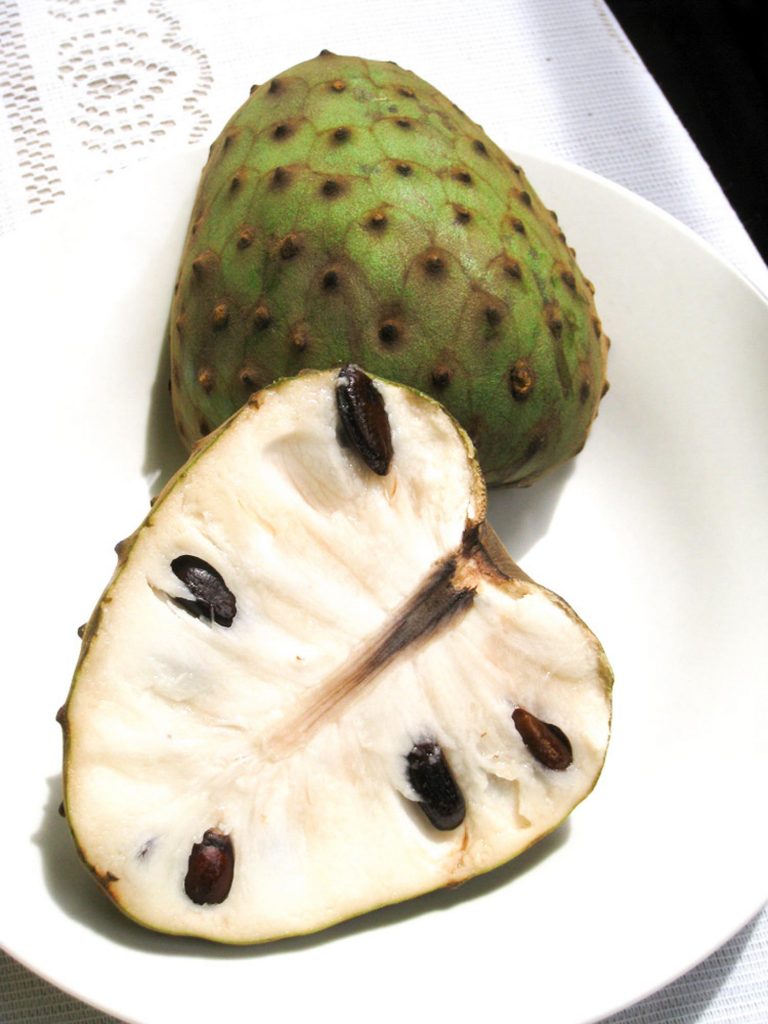
Cherimoya
Mark Twain once wrote about cherimoya being “the most delicious fruit known to mankind,” and Ecuadorians agree.
This fruit is native to Ecuador, Peru, Chile, Colombia and Bolivia, and locals call it the smaller version of guanabana.
But unlike guanabana, the skin of the cherimoya fruit looks like overlapping scales and its flesh is also more fibrous and juicy.
Cherimoya season runs from October to May and it’s when you’ll see this unique Ecuadorian fruit sold in local markets.
Aside from being eaten raw, locals also use cherimoya for shakes and smoothies, and as flavorings for puddings, sorbets and ice cream.
It’s also common in South East Asia and a popular Lao fruit.
‘Sapote
This Ecuadorian fruit comes from the mamey sapote tree that’s native to the Americasis one of the most popular fruits in Nicaragua and more commonly consumed in the United States.
Sapote season runs from May to July, although some cultivars can bear fruit all-year round.
The sapote fruit is considered a berry that looks like a kiwi with a sandpaper-like skin from the outside.
It can grow up to 25 centimeters and the flesh inside can range from orange to red.
Some Ecuadorians call sapote their local peach because of its soft and creamy texture.
It also tastes like a combination of pumpkin, potato, peach, apricot and cherry. I like it because it has a spicy flavour like a baked pie.
Aside from being eaten raw, the sapote fruit is also made into smoothies, fruit bars, and milkshakes.
‘Pepino Dulce
Pepino dulce looks more like a mango than a real cucumber.
This Ecuador fruit is native to South American countries where it’s known for its sweetness, but you can rarely find it overseas because it doesn’t ship well.
One of the Ecuadorian fruits to absolutely keep an eye out for!
Once you open the ripe fruit, the flesh of pepino dulce looks like a papaya. But its taste is reminiscent of a juicier combination of honeydew melon and cucumber.
Ecuadorians usually eat pepino dulce or sweet cucumber raw, although it’s also used for salads, drinks and desserts.
‘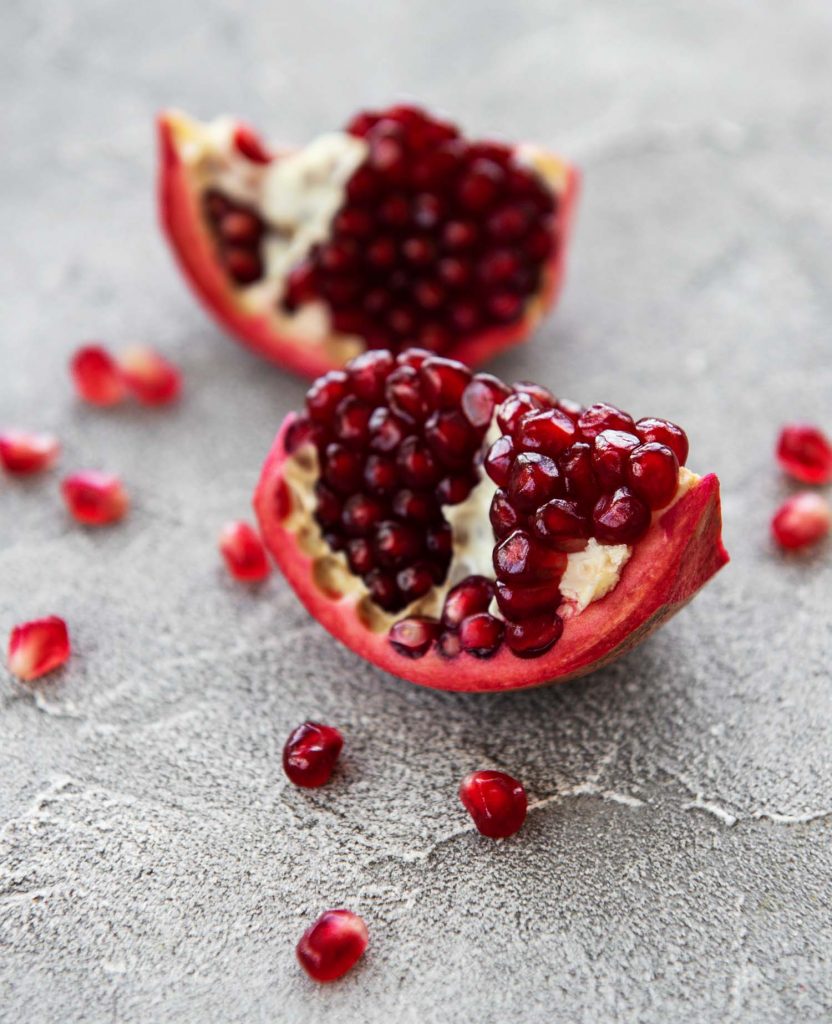
Granada
More popularly known as pomegranate, granada is native to the Mediterranean region and has been brought into the Americas by Spanish colonists.
The granada fruit has a distinct red-purple skin and once you open it, you’ll see small red seeds that contain its juices.
Aside from being consumed raw, granada is also used for juices, smoothies, cocktails and desserts around Ecuador because of its sweet and sometimes sour taste.
Granada seeds are also used for a wide variety of dishes around the country because it adds a hint of color.
This fruit is also very popular for containing vitamin C and antioxidants.
‘Nispero
Also called mispero or loqat, nispero is a tropical fruit that’s native to Asia and is now widely grown in South America and the Mediterranean.
Nispero fruits look like small peaches and they are ready for harvest between early spring and early summer.
Once fully ripe, nisperos taste similar to mangoes, peaches or citrus.
Aside from being eaten raw, nisperos are also used in desserts, salads and in a dish called nispero chicken.
‘Noni
The noni fruit became popular around the world with the introduction of juicing for a healthy lifestyle.
But in Ecuador and other countries where it’s widely grown, noni is considered as “famine food” because it’s only eaten when there’s no other food around.
This is because noni has a strong, vomit-like odor that makes it less appetizing to eat.
But once you get past the foul smell, the flesh actually tastes like citrus, which is why locals eat it with some salt.
I first discovered noni in Hawaii, where locals have stories upon stories of people who were healed by this exotic fruit.
But because of its rotten cheese-like taste, noni is mostly processed into a powder (like this one) that can be used for juices and smoothies.
Some also process it into a pill or capsules for its health benefits.
‘Feijoa
Its name is reminiscent of the Brazilian black bean stew “feijoada,” but feijoa is actually a fruit that’s native to Latin American countries like Ecuador, Argentina, Uruguay and Southern Brazil.
This Ecuadorian fruit is about the size of a chicken egg.
It resembles a guava, although its flavor profile is similar to that of an apple or pineapple with a hint of mint.
The feijoa tree usually bears fruit during the autumn months.
Ecuadorians take advantage of this peak season by eating feijoa fruit raw or made into desserts.
Growing on shrubs in the highlands of South America, these small fruits ripen in the fall, and have a sweet flavor compared to apples or pineapples.
Feijoa are also known as guavasteen and pineapple guava. The texture is gritty like a pear but the flavour is more like a pineapple, guava and strawberry.
While they are native to South America, they are now grown throughout the world and are very popular in Iran, Russia and New Zealand.
While the most common way to eat feijoa is raw, the skin should be peeled as it is bitter. Or cut them in half and scoop out the flesh as you would a kiwi.
Feijoa are very high in vitamin C, B vitamins, fibre, iron and minerals.
‘
Cacao
Probably the most widely known fruit in this list is cacao. It is the source of chocolate.
And Ecuador produces some of the best cacao fruits in the world.
Cacao beans are also made into cocoa butter, cocoa solids and chocolate liquor. But in Ecuador, locals also enjoy its flesh because of its sweet and tart flavor profile.
Cacao is harvested for most of the year. Although peak season in western Ecuador, which produces most of the country’s cacao runs from March to June.
A second harvest happens between October and February.
Once processed, cacao beans can be used for a wide variety of recipes, especially desserts.
And much of it is exported as Ecuadorian chocolate is incredible.
‘Snakefruit
I first tried snakefruit in Sucua in the Ecuadorian Amazon and I wasn’t impressed as it seemed a bit like a potato fruit with a snake skin exterior.
You can see it in the video above with many other Ecuadorian fruits.
But later I tried it in Indonesia and these Bali fruits are really tasty when ripe, like a fruit cocktail of strawberry, pear and peach!
Have a look for it but make sure it’s ripe
Pin it: Ecuadorian Fruit
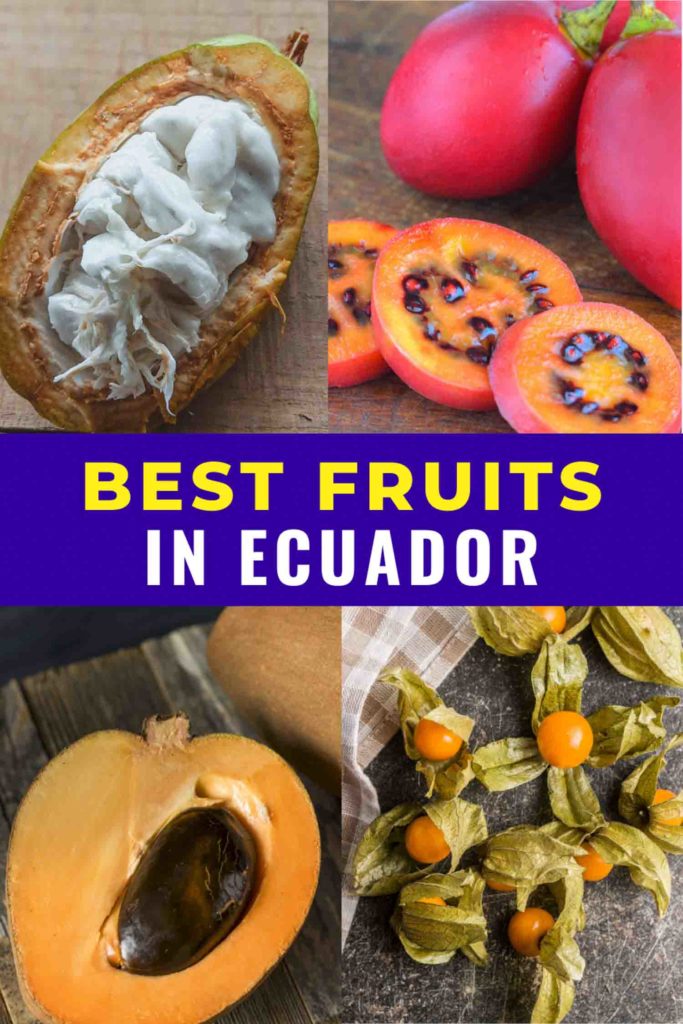
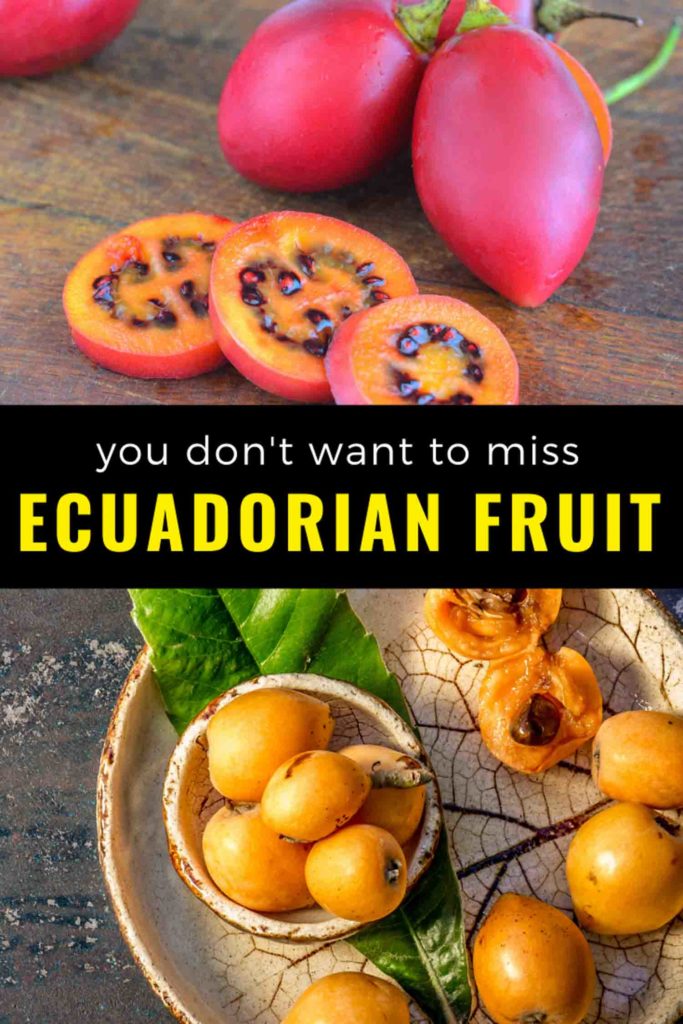
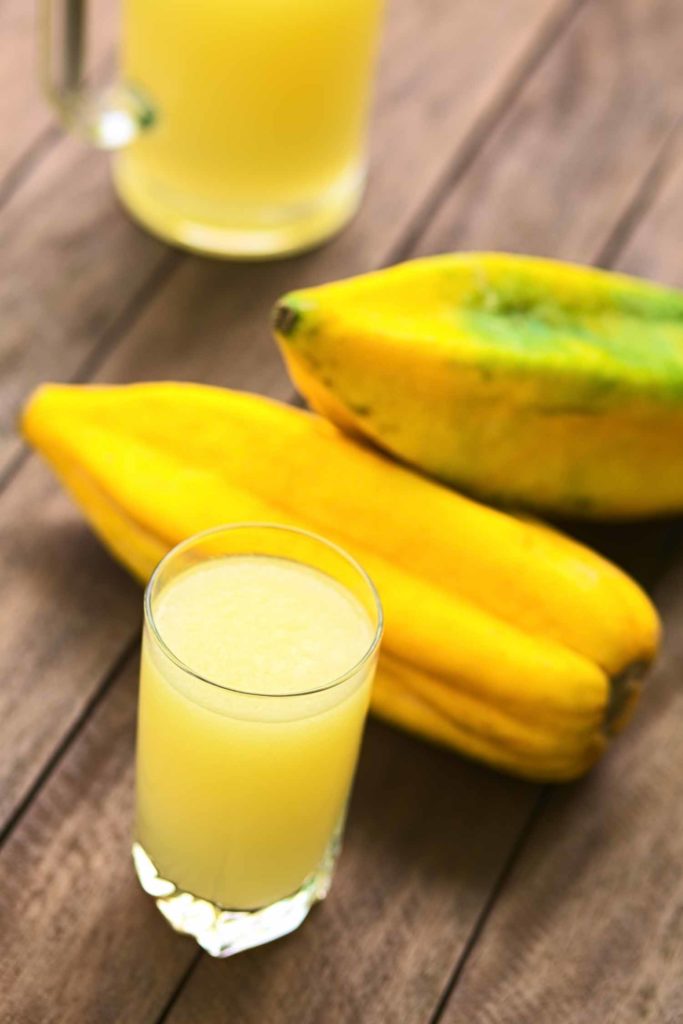
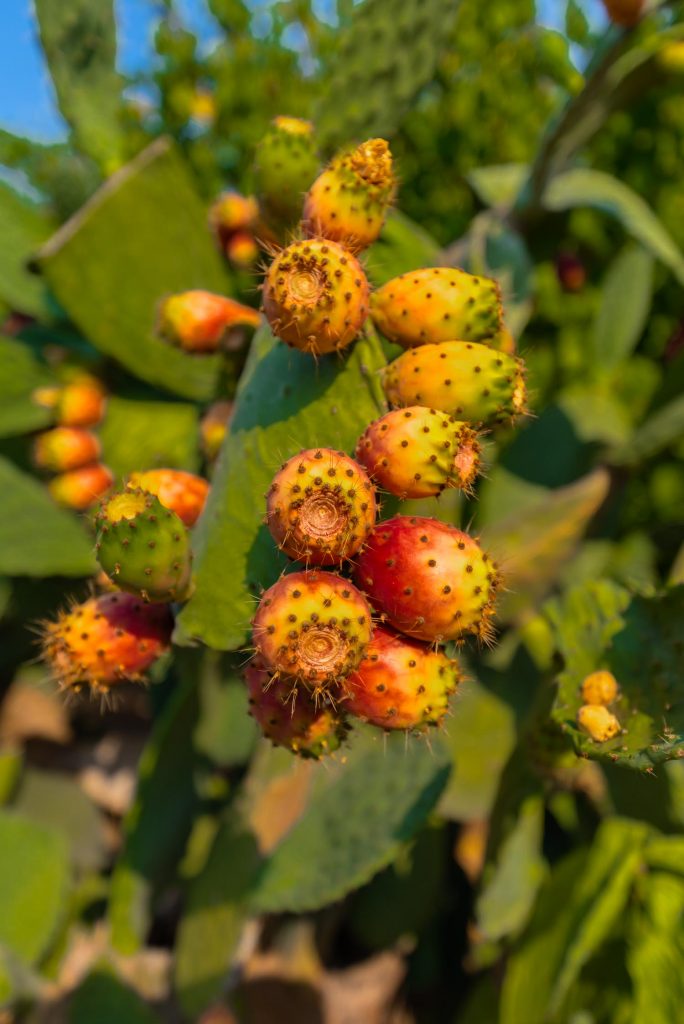
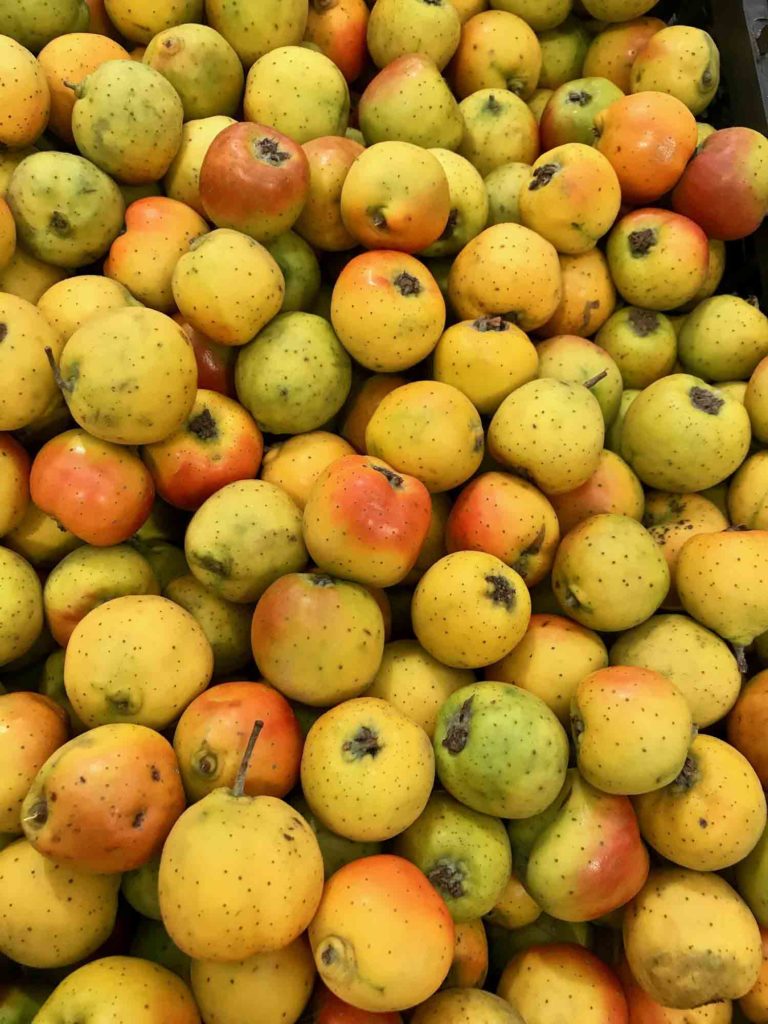
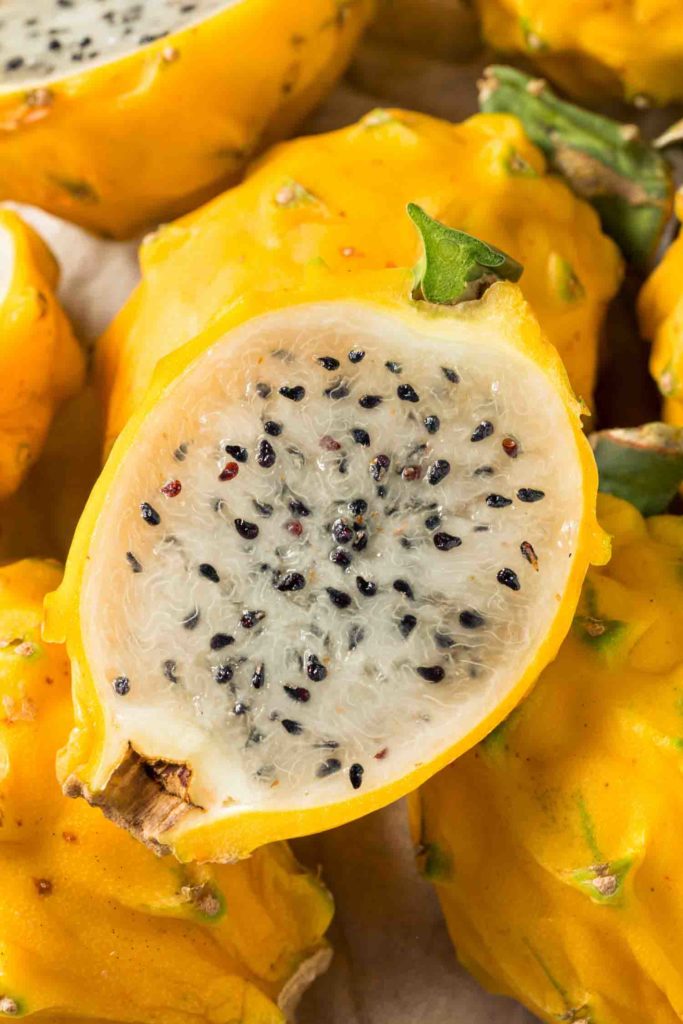
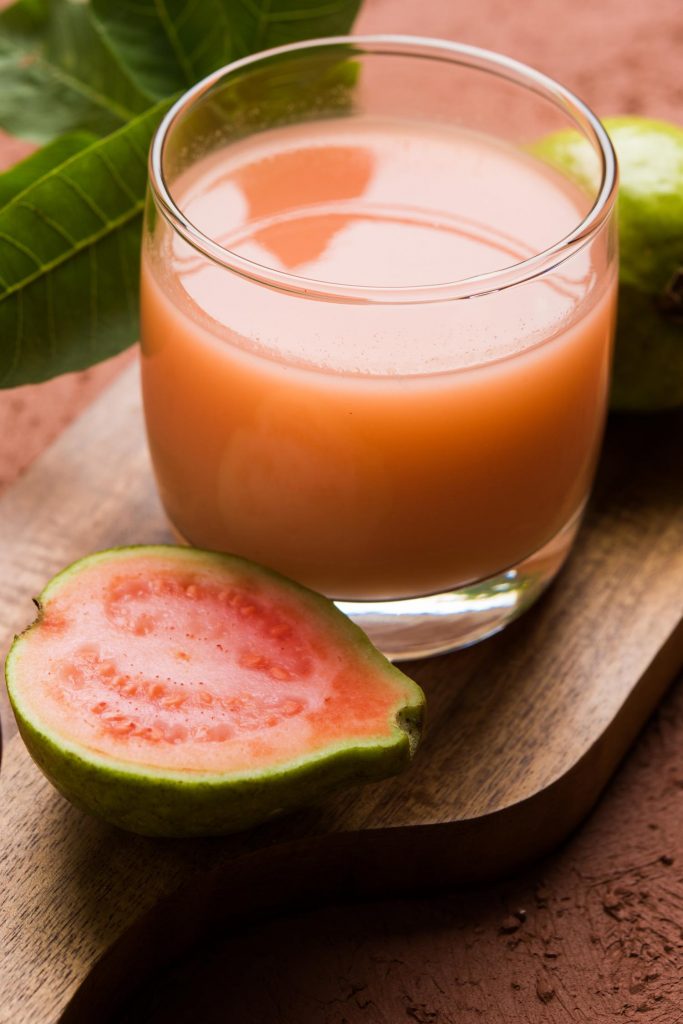
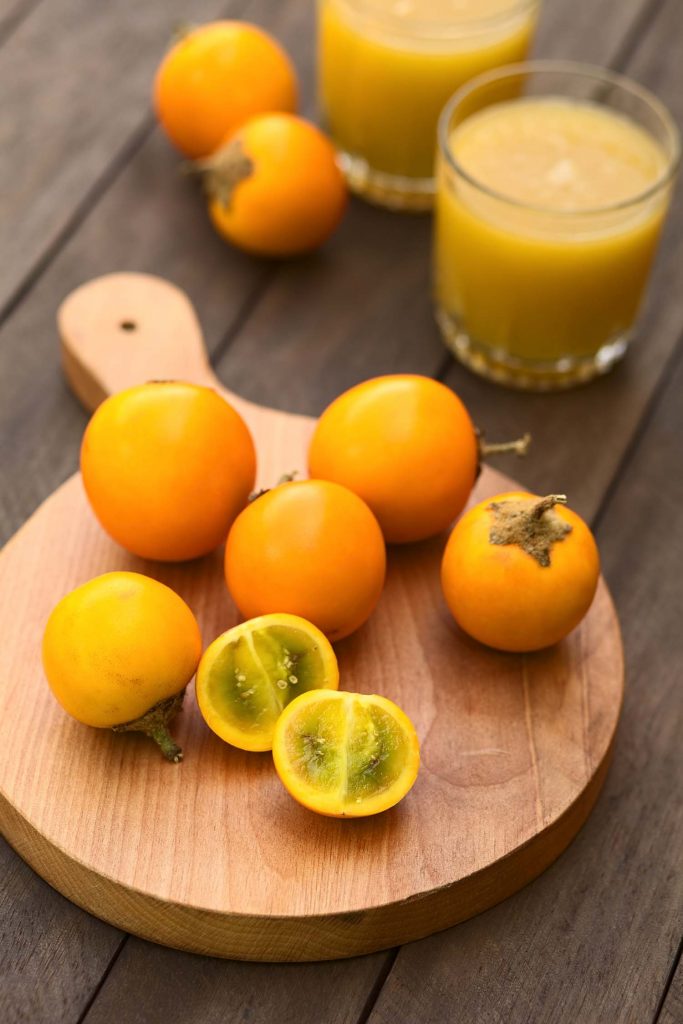
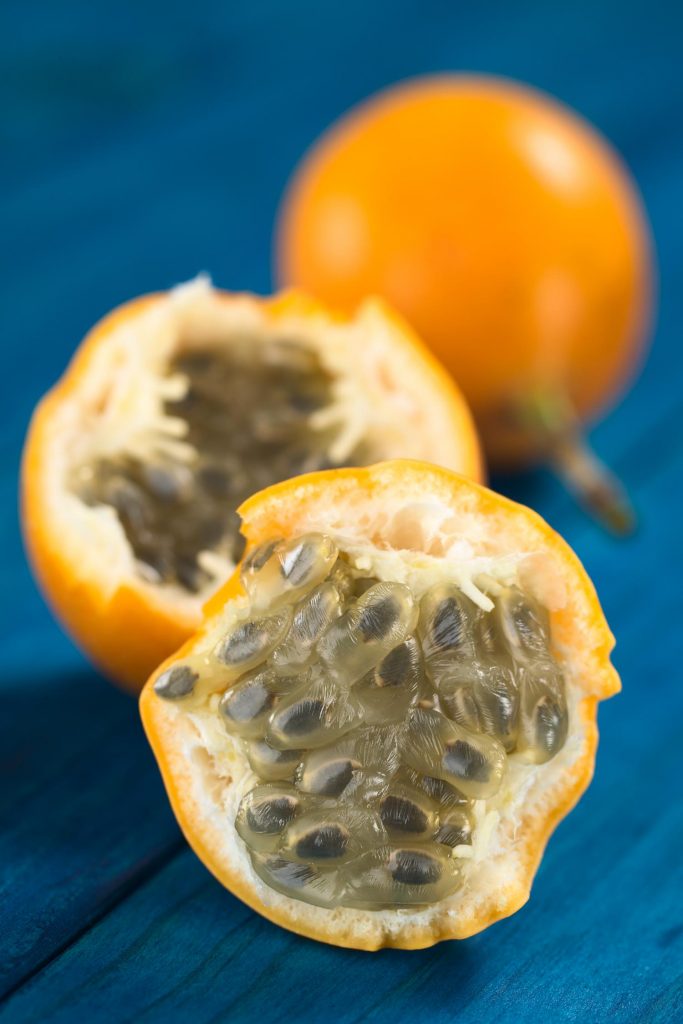
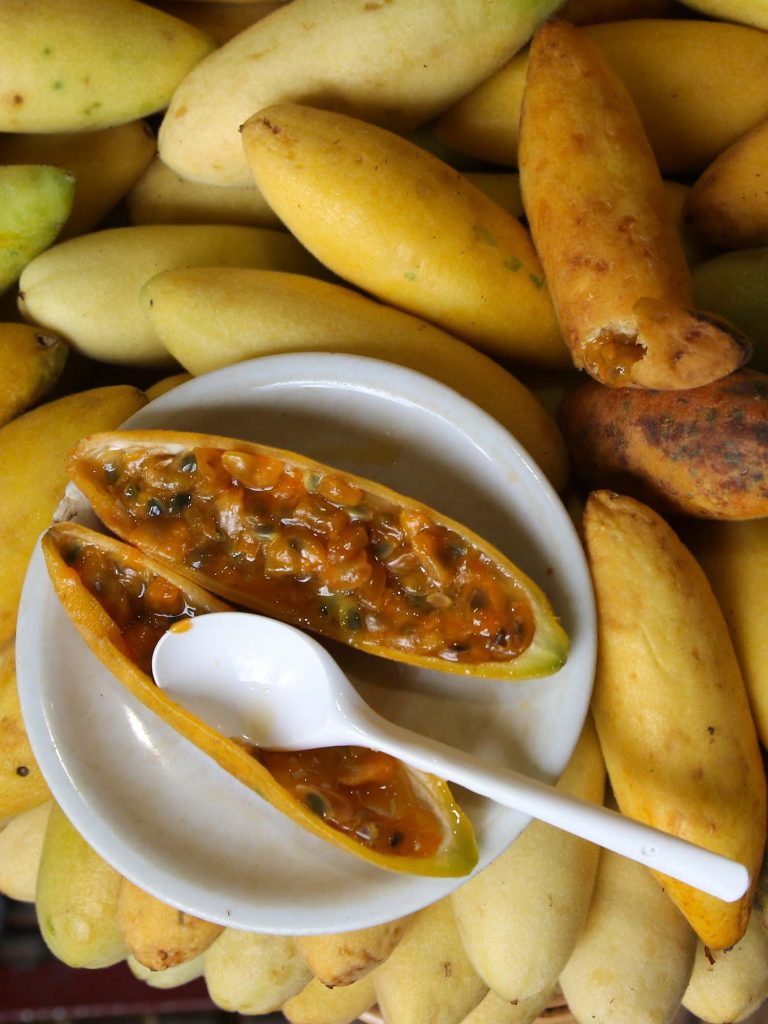
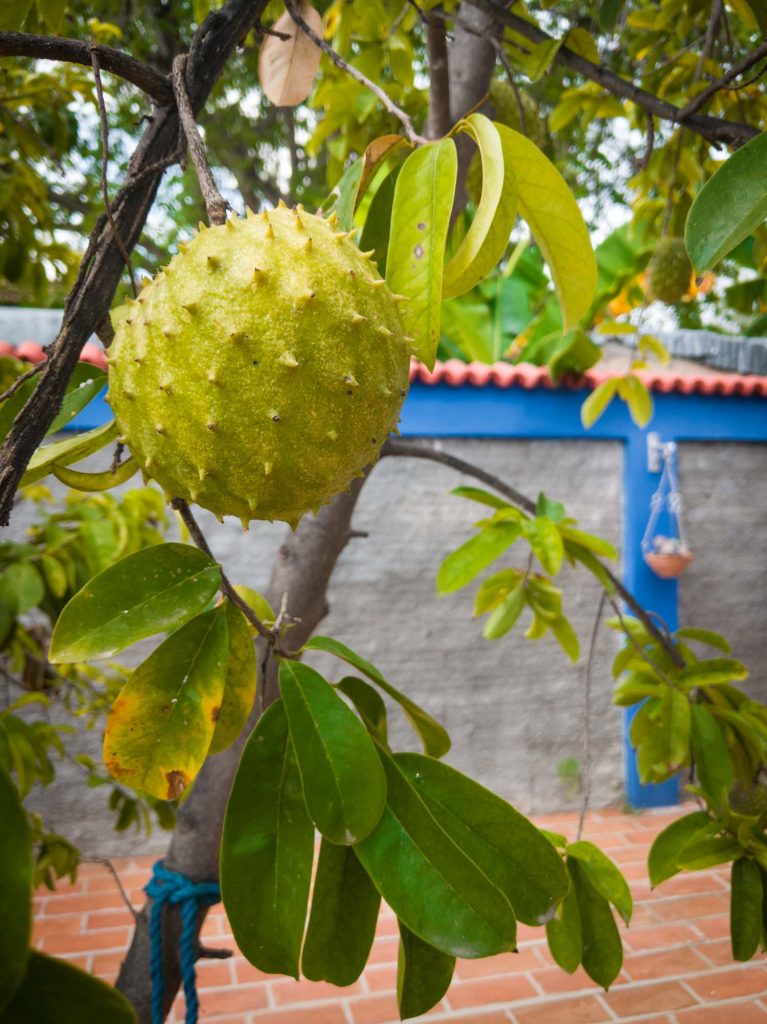
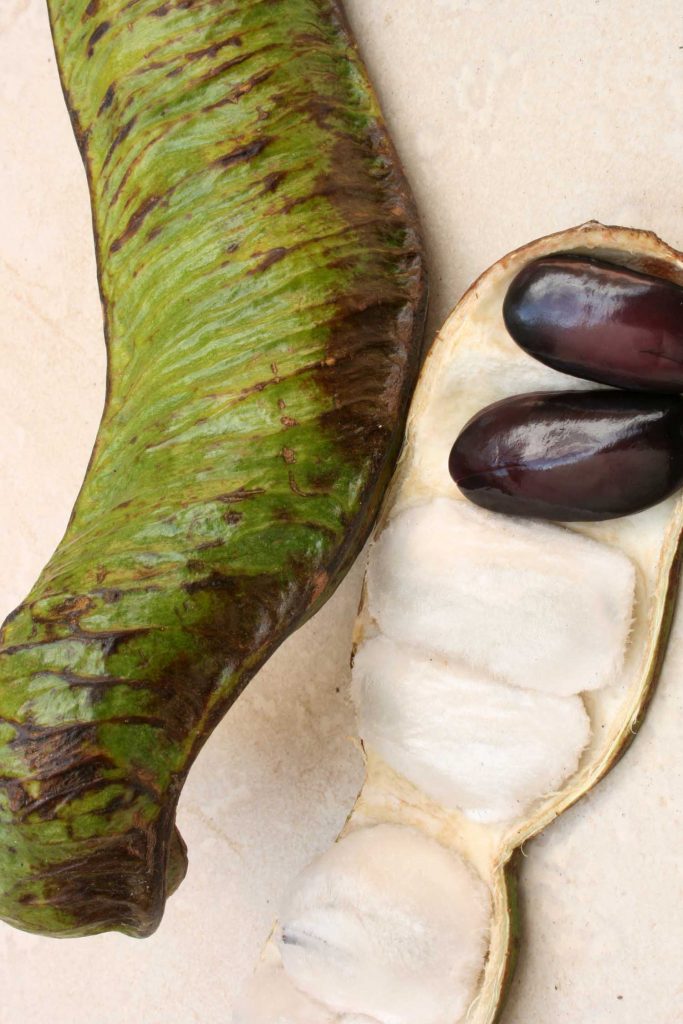
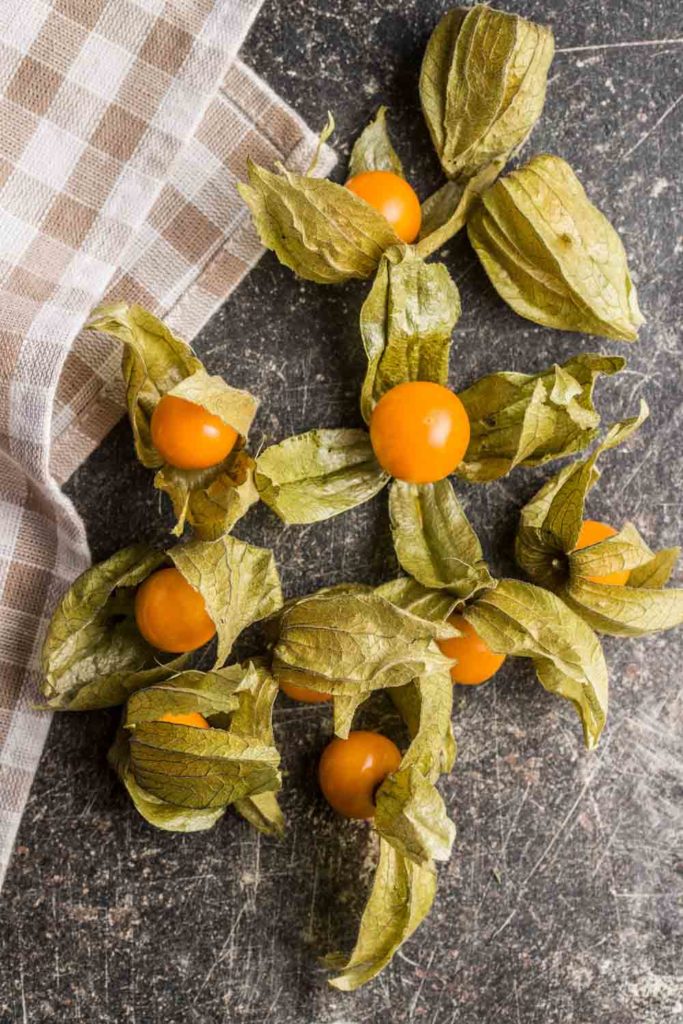
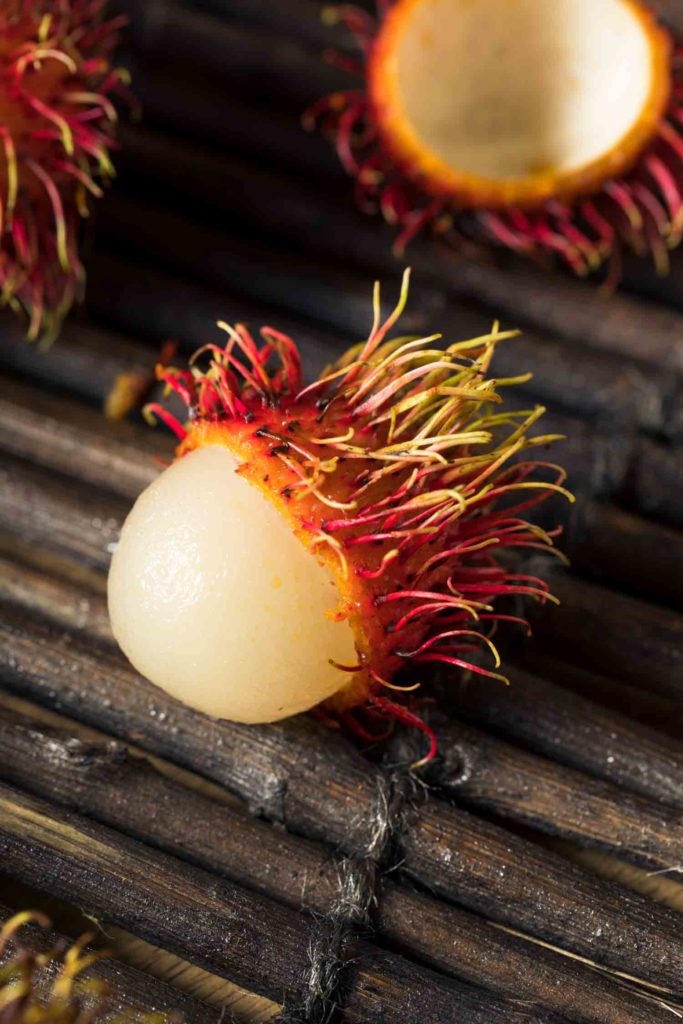
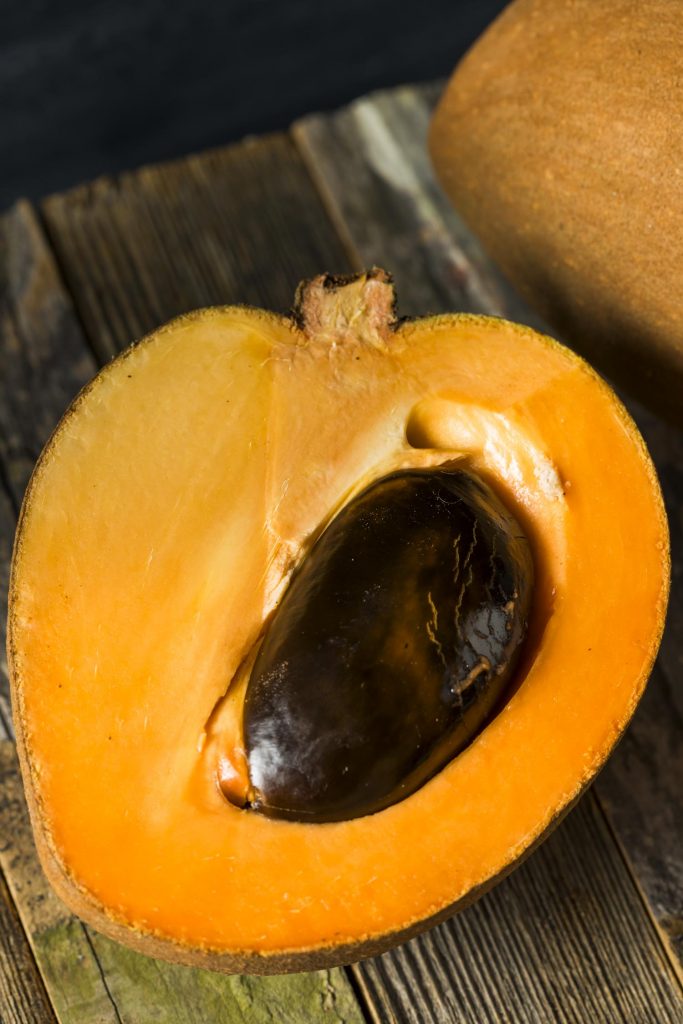
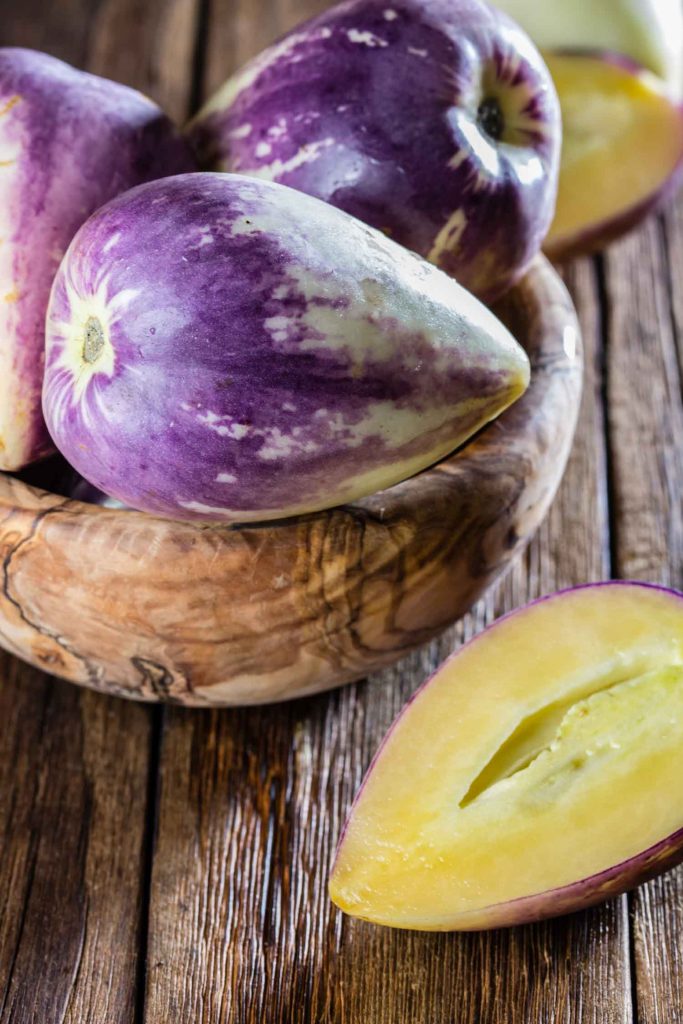
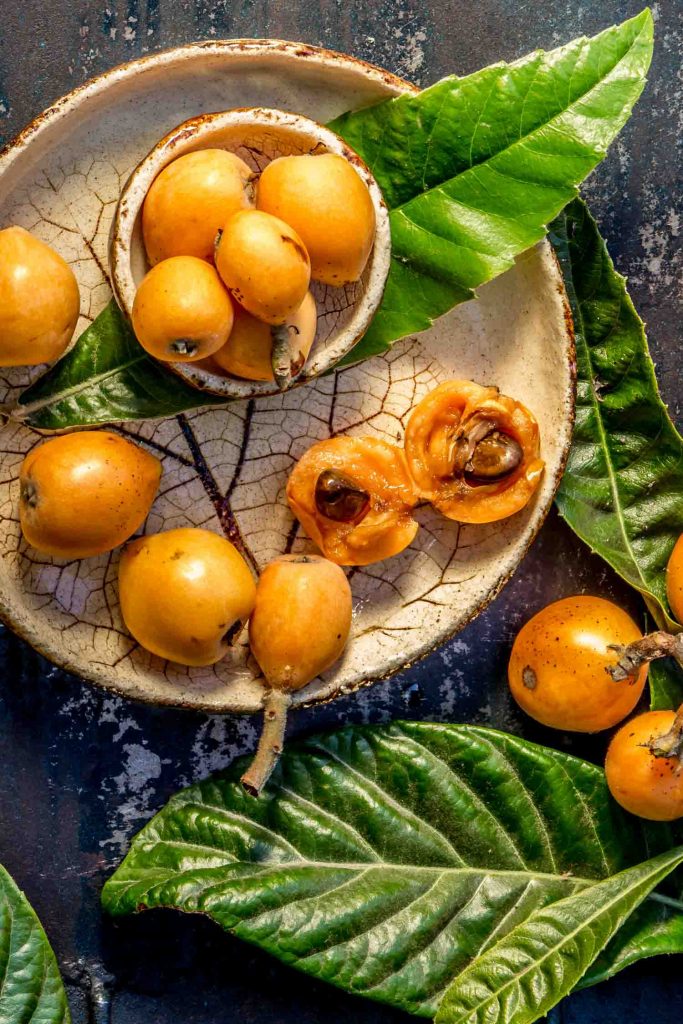
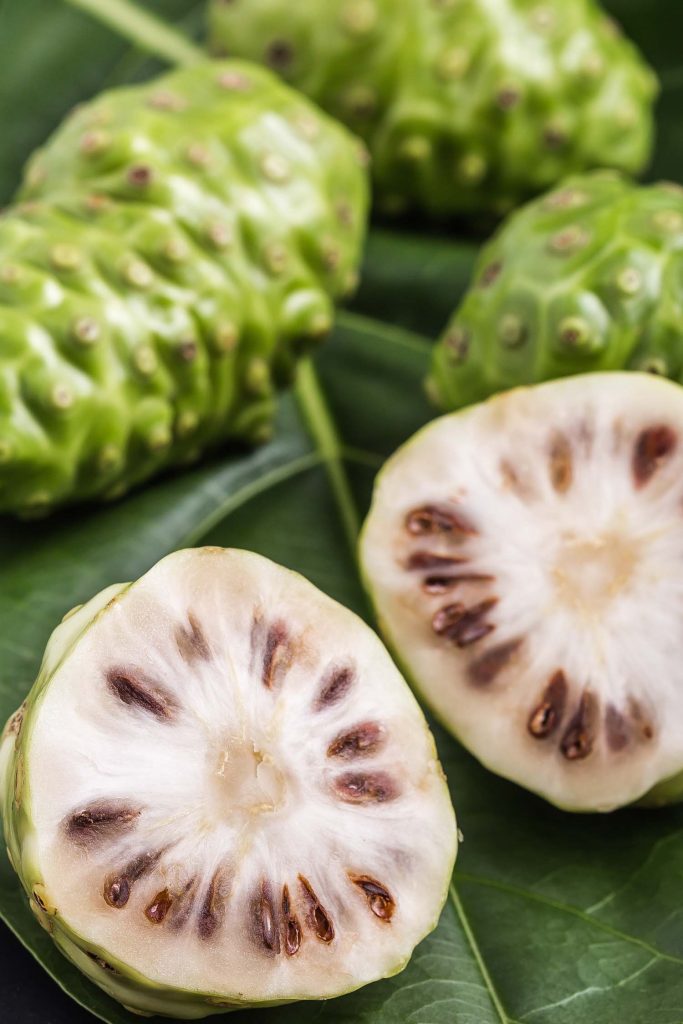
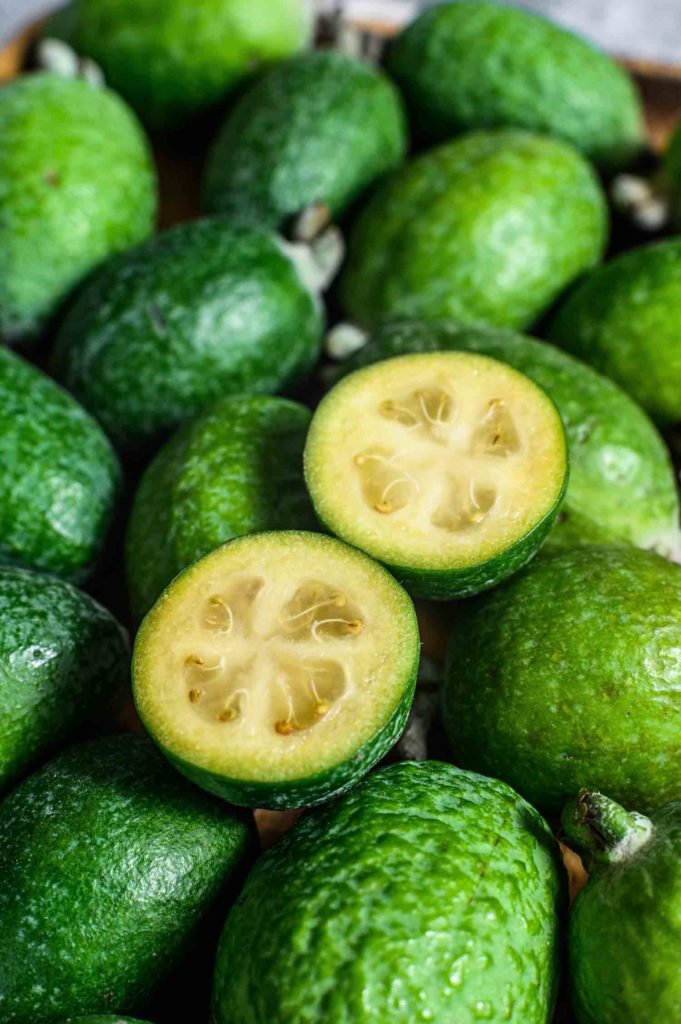
Oh, sorry, you’ve missed to taste the most delicious fruit, the zapote (not the same as mamey) , once you try, you can not stop until the juice of that fruit start to leak from your nose hahaha. Only available from april to june.
We’re traveling to Ecuador next week and found your blog while searching for fruit descriptions.
Always when I travel I feel like I miss out because I don’t know what some strange fruit is!
I took your descriptions and images to bring with me as a ‘cheat sheet’ when going to the markets.
Thanks so much for sharing – best of fortune to you in this new year!
I am so glad I started following you before I came to Ecuador, so far .d have tried most of the fruits you have mentioned. I really like following you on Patreon, you have given me the enthusiasm to travel the world. Thank you, your friend Tim